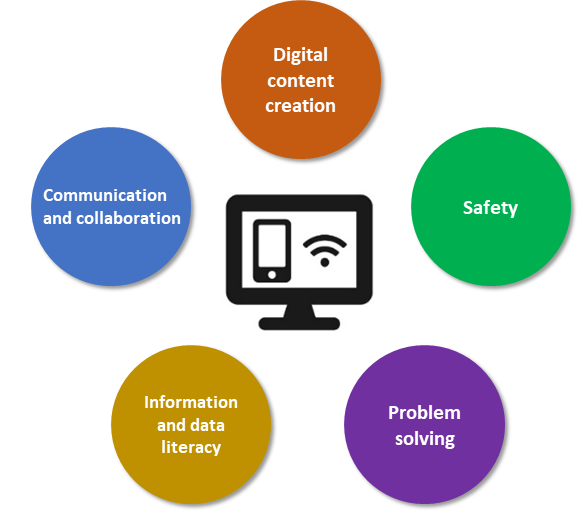Photo: UNDP Mongolia
Written by: UNDP Mongolia's Accelerator Lab Team
A little over 25 years ago, a herder community in remote locations in Mongolia had to travel to a village (Soum:) center to make a call. Things have totally changed since then, with the introduction of cell phones in the mid-90s. Today, almost every Mongolian (99.6%[1]) has a cell phone, and nearly 80% of them have smartphones. But these numbers do not reveal much, as access to technology does not indicate the actual acquired “digital skills” – knowledge and attitudes to learn, earn and thrive in modern digitalized societies.
Exploring the “digital skills” beast
Students, workers, and people of all ages and backgrounds increasingly need digital skills to succeed in an evolving marketplace, as it is projected that almost every job will require a certain level of such skills soon. Digital skills can be understood as an aggregate of abilities, starting from basic skills such as word processing to more complicated industry specific functions such as social media marketing and e-commerce. However, what is referred to as digital skills are not only 'skills' in a traditional sense, but a combination of day-to-day behavior, expertise, knowledge, work habits, character traits, and dispositions.
Sticking to leaving no one behind, UNDP Mongolia acknowledges that many vulnerable groups do not have requisite resources and abilities to fully utilize the benefits of digital technology and have doubts and fears about its potential benefits. This means people who have limited, or no digital skills will be severely handicapped in employment opportunities, living a good and safe daily life, and enjoying inclusive citizenship. On the other hand, individuals have varying abilities that hinder their use of digital technologies. That is why it is crucial to understand the level of user’s digital competencies and provide more effective, practical, and tailored digital services and training that matches the needs.
Solutions to measure digital skills
Management thinker Peter Drucker is famously quoted for saying, "You can't manage what you can't measure." Various attempts were taken to determine the level of digital competency among those who are falling behind globally, but it is still a new concept that is continuously evolving. Some frameworks are oriented towards workforce development, while others focus on helping regular citizens to use digital services more effectively. For instance, Google’s framework includes digital entrepreneurship skills, such as online marketing and e-commerce, while ICDL framework aims at raising digital skills standards in the workforce, education and society as a whole. Nonetheless, all existing frameworks acknowledge the need for basic digital literacy for the general public.
The DigComp framework 2.1 is a popular framework adopted by most member countries of the European Union, World Bank, and other multilateral organizations. Its main advantage is the flexibility of use in different contexts and for different target groups. It can help people with no or low digital literacy find the most essential skills to improve their lives and to assess whether they are progressing. DigComp recognizes 21 competencies in 5 areas (see below), sets out eight proficiency levels for each area and gives examples of their application for using digital technologies in critical, collaborative, and creative ways.
Source: Digital Competence Framework for citizens (DigComp): State of play and Next Steps
Experimenting on the ground
The Accelerator Lab of UNDP Mongolia uses DigComp as a fundamental guiding framework to assess digital skills of vulnerable population in the country. With the principle that “No assumptions must be made about a person’s digital capabilities, just because they may have special educational needs or a disability,” we started off with low-income, migrant, remote, elderly, and people with disabilities as our targeted segment of population. To apply the framework for a specific context of Mongolia, we translated and modified the framework’s descriptions and examples to accommodate these groups. We had several rounds of revisions and pre-testing, from which we learned to use plain language and provide substitute definitions to ensure that we are not intimidating and confusing our participants.
The self-assessment tool of the framework is complemented with tailored task-based evaluation (modified to Mongolian digital consumption) and focus group discussions that explore more nuanced challenges and opportunities among target groups.
While our experimental study is still ongoing, we learned that digital technology is ever evolving and requires a flexible and agile approach to effectively understand and address. Despite the globally driven forces, our work is heavily dependent on the context that we are living. Though DigComp is one of the most well-established Digital literacy frameworks, we needed to modify and iterate our version for the average Mongolian citizen without losing its core concept.
[1] MMCG /Mongolian Marketing Consulting Group/ survey, 2018

 Locations
Locations




